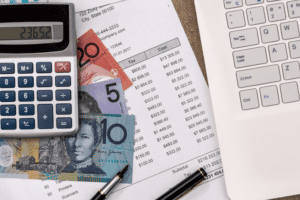
The simplicity of the average cost method is one of its main benefits. It takes less time and labor to implement an average cost method, cost of goods sold thereby reducing company costs. The method works best for companies that sell large numbers of relatively similar products.
How to calculate cost of goods sold from income statement
- The articles and research support materials available on this site are educational and are not intended to be investment or tax advice.
- Companies that make and sell products or buy and resell goods must calculate COGS to write off the expense.
- Understanding these components helps businesses accurately calculate COGS, ensuring they have a precise measure of their production costs.
- The method works best for companies that sell large numbers of relatively similar products.
- Therefore, physical periodic verification of the inventory records is required.
He is especially interested in environmental themes and his writing is often motivated by a passion to help entrepreneurs/manufacturers reduce waste and increase operational efficiencies. He has a highly informative writing style that does not sacrifice readability. Working closely with manufacturers on case studies and peering deeply into a plethora of manufacturing topics, Mattias always makes sure his writing is insightful and well-informed. Obviously, automation is a hot-button issue in today’s economy and has a bad rep for displacing certain workers.
Ask a Financial Professional Any Question
The slight difference between the cost of sales and COGS is that it also includes the costs of services provided, making it more relevant to service-oriented businesses. A consultancy, for instance, would have the cost of sales that might consist of the salary of consultants and direct expenses to provide their services, such as travel when visiting clients. The cost of goods sold applies only to businesses that sell products. If your business is service based (like a psychology clinic or legal team), your direct costs don’t come from sales of goods. Instead, your direct costs are any expenses related directly to your service. For instance, an outsourced accounting company would likely include its accounting software subscription as part of its direct costs.
How to Calculate Cost of Goods Sold and Grow Your Profit Margins

When perpetual methodology is utilized, the cost of goods sold and ending inventory are calculated at the time of each sale rather than at the end of the month. For example, in this case, when the first sale of 150 units is made, inventory will be removed and cost computed as of that date from the beginning inventory. The differences in timing as to when cost of goods sold is calculated can alter the order that costs are sequenced. At the end of each quarter or time period, use your accounting software or the cost of goods sold formula above to calculate COGS. Re-verify your goods purchased, goods sold, and current inventory in order to look for loss or theft.
- It lets you know how efficiently your business is utilising its labour and raw materials to manufacture its finished products.
- Thus, this definition does not talk about any other detail with regards to COGS like cost of services.
- Furthermore, under this method, there is always a chance of committing an error due to improper entry or failure to prepare or record the inventory purchased.
- It doesn’t, however, state what order inventory is deemed to be sold.
- Investing in machines that do the job in place of human workers usually requires a hefty upfront payment, but in the long run, your cost of goods sold could be lowered.
Cost of goods sold was calculated to be $9,360, which should be recorded as an expense. Beginning merchandise inventory had a balance of $3,150 before adjustment. The inventory at period end should be $8,955, requiring an entry to increase merchandise inventory by $5,895. Cost of goods sold was calculated to be $7,200, which should be recorded as an expense. The adjustment ensures that only the inventory costs that remain on hand are recorded, and the remainder of the goods available for sale are expensed on the income statement as cost of goods sold.
Special Identification Method

Selling and administrative expenses for the year amounted to $110,000. During times of inflation, FIFO tends to increase net income over time by lowering the COGS. The cost of goods sold is an important metric for a number of reasons. Our writing and editorial staff are a team of experts holding advanced financial designations and have written for most major financial media publications. Our work has been directly cited by organizations including Entrepreneur, Business Insider, Investopedia, Forbes, CNBC, and many others.

COGS directly impacts a company’s profits as COGS is subtracted from revenue. If a company can reduce its COGS through better deals with suppliers or through more efficiency in the production process, it can be more profitable. Because COGS is a cost of doing business, it is recorded as a business expense on income statements.
Once it’s calculated, COGS is deducted from a business’s gross revenue to determine its gross margin. Other expenses are then deducted to calculate the business’s net profits. Both manufacturers and retailers list cost of good sold on the income statement as an expense directly after the total revenues for the period.
For this reason, companies sometimes choose accounting methods that will produce a lower COGS figure, in an attempt to boost their reported profitability. Merchandise inventory, before adjustment, had a balance of $3,150, which was the beginning inventory. The inventory at the end of the period should be $8,895, requiring an entry to increase merchandise inventory by $5,745.

